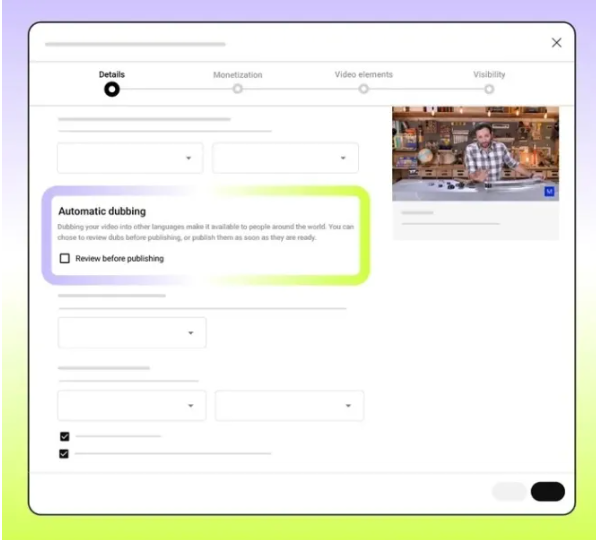YouTube recently announced a major update: the AI automatic dubbing feature will be available to hundreds of thousands of channels! This innovation, based on Google's Gemini artificial intelligence, aims to help content creators easily overcome language barriers and spread video content to more audiences around the world. This move will not only expand the influence of content, but also lower the threshold for content production, benefiting more creators. This feature was first unveiled at the Vidcon conference last year. After testing and improvement, it is now officially open to channels focusing on educational and guidance content, and supports dubbing generation in multiple languages.
YouTube recently announced a major update - the AI automatic dubbing feature will be available for hundreds of thousands of channels. This innovative technology is designed to help content creators reach global audiences more easily, eliminating language barriers.
It is reported that this AI-based dubbing tool was first unveiled at last year's Vidcon conference and was still in a small-scale testing phase. Now, this feature is officially open to channels that focus on educational and instructional content, including cooking, craft and other types of videos.

It's very simple to use: Creators simply upload their videos as usual, and YouTube will automatically recognize the original language and generate a multilingual dubbed version. Currently supported languages include English, French, German, Hindi, Indonesian, Italian, Japanese, Portuguese and Spanish.
It is worth noting that this technology relies on Google’s Gemini artificial intelligence capabilities and can imitate human speech. However, YouTube also frankly stated that since the technology is still in the early stages of development, the accuracy of dubbing may have certain limitations. The company said it will continue to optimize and welcome feedback from users.
In the future, YouTube also plans to launch an "expression voice" function, which will help AI more accurately replicate the creator's tone, emotion, and even the atmosphere of the surrounding environment. This means cross-language content distribution will become more vivid and natural.
The launch of this technology undoubtedly provides global content creators with a new possibility to break through language boundaries. As AI technology continues to advance, we have reason to believe that digital content in the future will become more inclusive and interconnected.
The opening of YouTube's AI automatic dubbing function heralds changes in content creation and dissemination methods. In the future, we will see more and more convenient cross-language content sharing, thereby building a more inclusive digital world. This is undoubtedly a win-win situation for content creators and global audiences.